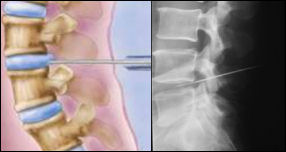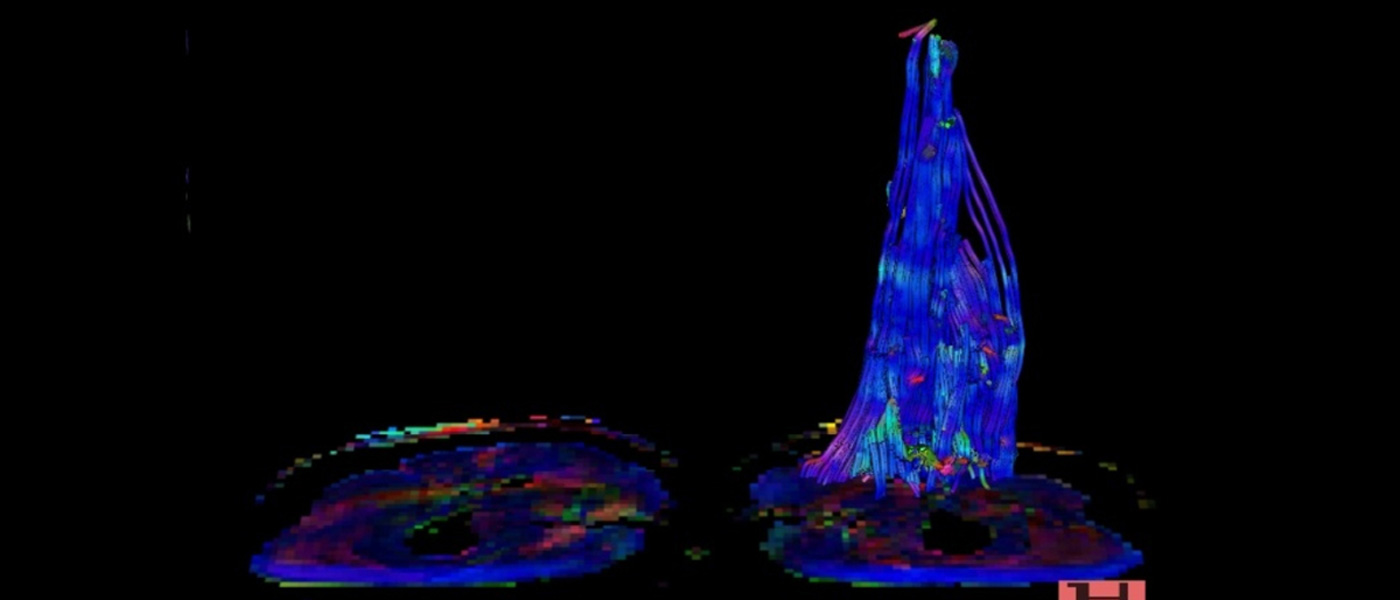X-ray and schematic demonstration of puncture of the intervertebral disc.
Chemonukleolysis with Ozone
Information about Chemonukleolysis with Ozone
Disc prolapse is one of the most known and feared causes of back pain though not the most common cause.
The intervertebral disc is normally held intact by a fibrous ring (annulus fibrosus). In cases of increased one-sided stress or burden, it leads to gradual degeneration of this fibrous ring and the jelly-like nucleus pulposus can prolapse into spinal canal. This is known as disc protrusion (when minimal) or disc prolapse (when prominent) or disc sequestration (when dislocated up or downn). This disc protrusion or prolapse can compress the adjacent nerve root leading to typical, acute radiating pain (lumboischialgia) which in cases of lumbar vertebra can extend right down to the feet on the affected side. This prolapse could finally lead to complete blockade of the vertebra where even minimal movement can lead to severe pain. In severe cases with compression of nerve roots it can also lead to sensory disturbances, weakness and also rarely paralysis.
Not all cases of disc prolapse are associated with pain. In somecases the patient has no or only slight pain.
In cases of symptomatic disc protrusion or prolapse one has to decide the therapy suitable to the patient and his pain symptoms
Before any invasive treatment of vertebral disc conditions one should try out the medical and physiotherapeutic measures.
In cases of unsuccessful medical and physiotherapy following are some of the treatment options available:
1. Chemonukleolysis with Ozone

2. Percutaneous Discectomy according to Onik-Method
3. Microsurgical open discectomy.
All the above mentioned treatment methods are minimal invasive procedures and are associated with a very short hospital-stay. All these methods which do not affect or involve the spinal canal reduce the risk of postoperative scar development which is the main cause of painful residual symptoms. These methods offer the advantage of repeatability and the option of traditional operative treatment can still be pursued in unsuccessful cases.
| Information as PDF-document |
 Ozon
(102KB)
Ozon
(102KB)Chemonukleolyse mit Ozon
|
Video of Chemonukleolysis
Quelle: Video zur Chemonukleolyse, Sat1, Februar 2005,
Hinweis: Zum Betrachten dieses Assets benötigen Sie das Windows MediaPlayer-Plugin, das Sie hier kostenfrei herunterladen können.
